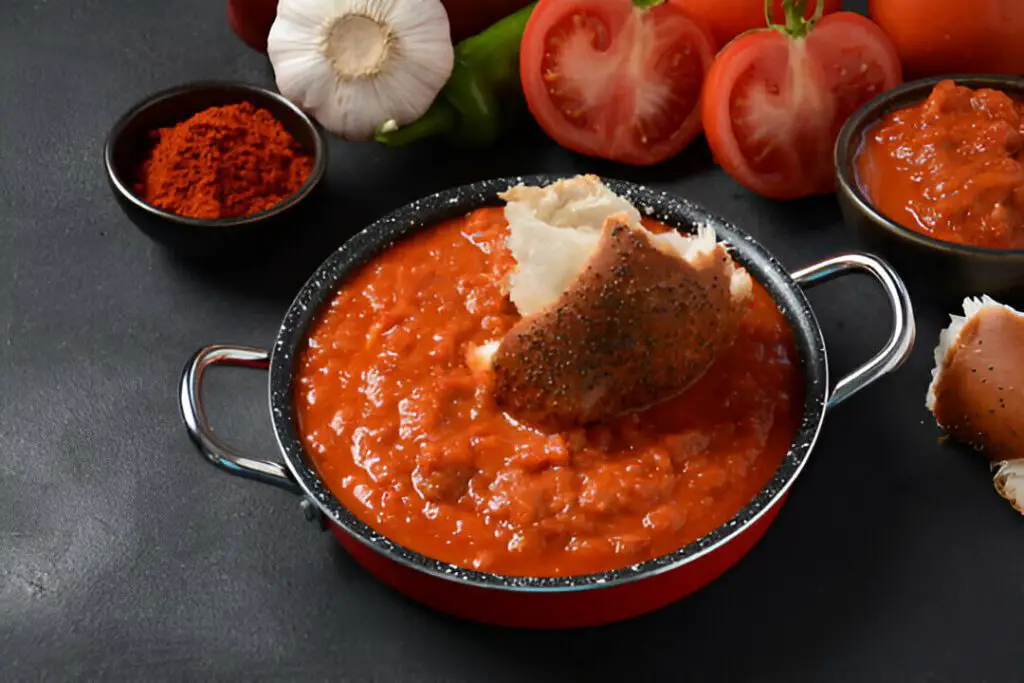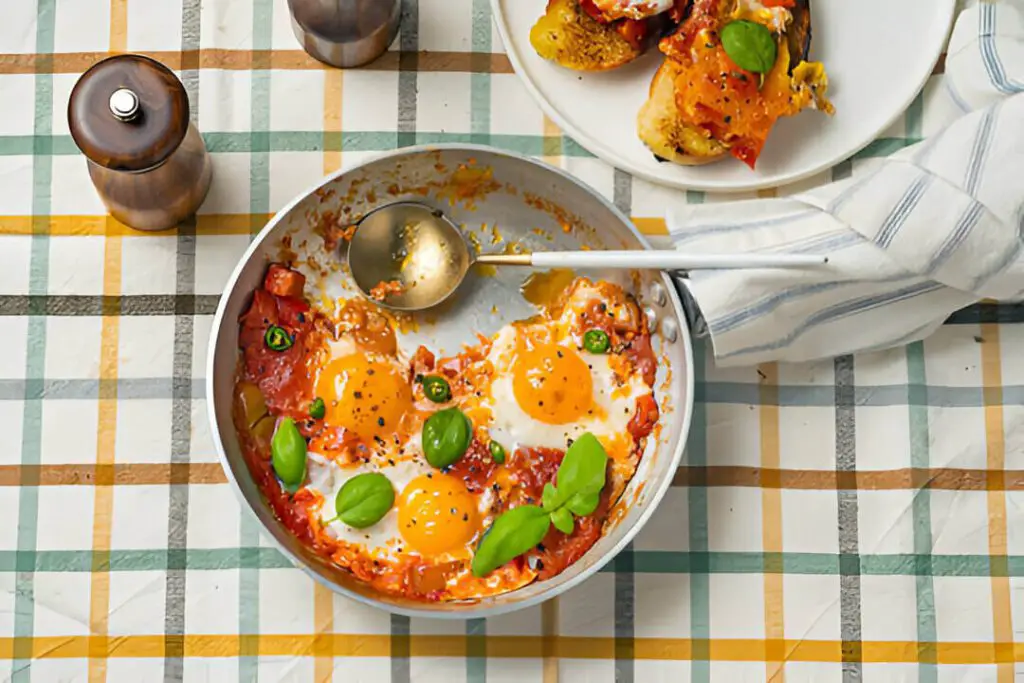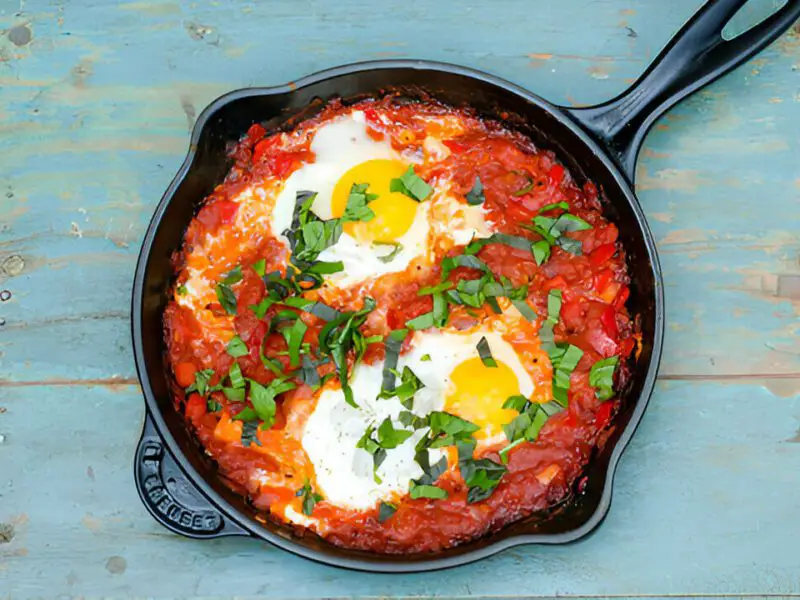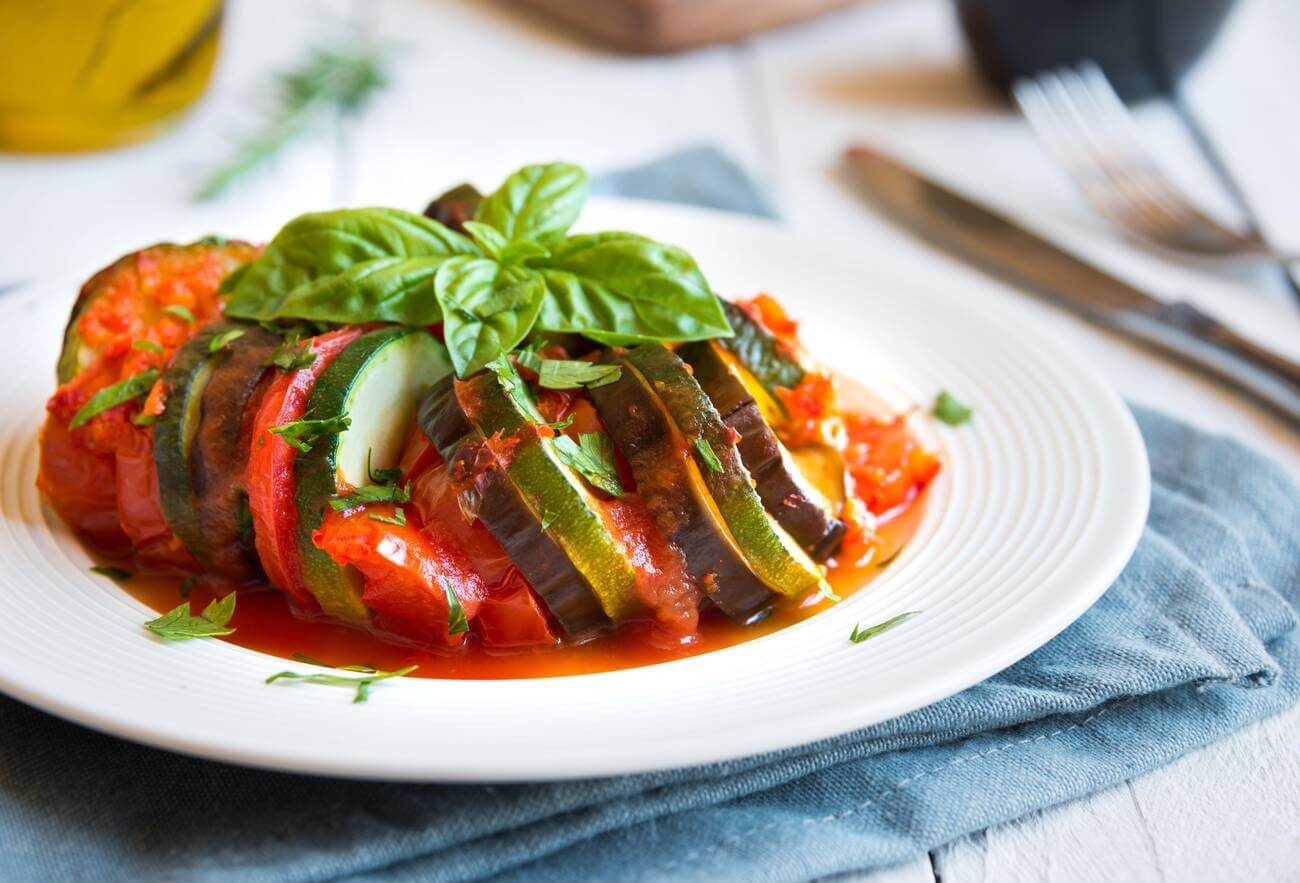If you’re anything like me, sometimes it can be hard to keep all these similar-sounding Moroccan dishes straight! I mean, how many times have I gone to make “shakshuka” only to realize halfway through that I’ve got a pot of matbucha simmering away instead?
Yeah, it’s happened more times than I care to admit. But no more! With this guide to the differences between matbucha and shakshuka, I’m hoping to save us all some culinary confusion and mix-ups in the kitchen.
Because while these tomato-based dishes from Morocco may sound alike, they’re really quite different—from the key ingredients to the textures to how you actually use them. And unless you want to be serving your guests a bowl of spicy veggie spread instead of their breakfast eggs, it pays to know your matbucha from your shakshuka.
So if you’ve ever wondered, “Wait, which one has the eggs again?” or “Am I supposed to be eating this condiment or is it a meal?” then this post is for you. By the time you’re done, you’ll be a pro at telling these two apart, so you can make the right choice every time. Sound good? Then read on for the dish on matbucha vs. shakshuka!
What is Matbucha?

At its simplest, matbucha is a Jewish-cooked tomato and pepper salad from Morocco. But like any good salad, the flavors are really where it shines. The base is tomatoes—usually ripe beefsteaks or vine tomatoes that have had time to develop lots of complex sweetness. Then you’ve got bell peppers, which add a nice pop of color as well as a mild heat.
Garlic is a must to boost the savory notes. And I always add a healthy dose of chili peppers too, because where’s the fun without a little kick? Red jalapeños work great, giving it a nice floral heat. The vegetables are finely diced, so they melt into each other as they simmer.
Some people also like to throw in onions, but I tend to leave those out since I find they can overwhelm the other flavors if you use too many. The veggies are gently cooked in olive oil over low heat until they’ve reduced and thickened into a jammy texture. It takes a good while, like at least an hour or two of simmering, but it’s so worth the wait.
As it cooks, the vegetables almost melt together into one uniform color—usually a vibrant red from all the tomatoes. You’re left with a thick, lush sauce-like consistency. And the flavors all intensify and blend together in the best possible way. It smells incredible as it bubbles away on the stove, like summer in a pot.
The finished matbucha keeps well in the fridge for about a week, though let’s be real, it probably won’t last that long! It’s so versatile; enjoy it as a dip with pita chips, spread it on sandwiches instead of jam, or toss it with pasta for an instant sauce. I could honestly eat it by the spoonful.
What Is Shakshuka?

Now this one is near and dear to my heart because it makes for the ultimate lazy weekend breakfast.
While matbucha is more of a condiment or spread, shakshuka is definitely a full meal deal. At its core, it’s eggs poached in a rich, tangy tomato sauce. But like any good sauce, the flavors are really where it’s at. Roma tomatoes give it body and just the right amount of acidity. Bell peppers and onions add sweetness, and chili peppers lend a nice heat.
Spice is crucial too; I like to use a combo of cumin, coriander, paprika, and cinnamon. The cinnamon is key, in my opinion; it adds this underlying warmth and depth that takes it to the next level. Once all the veggies are softened in olive oil, you can add a bit of vinegar to brighten everything up.
Then comes everyone’s favorite part—cracking those eggs right into the bubbling sauce. I usually go for two per person so we’re all fully fueled up. As they poach, the yolks thicken the sauce even more into a rich, velvety texture. It smells incredible, like a party in your mouth. I was just about to dive face-first into the pan!
The finished Moroccan shakshuka has a luscious, thick sauce studded with tender egg bites. It’s the perfect thing to cozy up with on the couch, accompanied by thick slices of crusty bread for mopping. You can’t help but feel nourished from the inside out.
Matbucha Vs. Shakshuka: What’s The Difference?
Ingredients Comparaison
Both dishes feature tomatoes and bell peppers prominently, which makes sense considering they hail from similar regions. But beyond that, there are some key differences in what goes into each one.
Matbucha keeps things light and veggie-focused. In addition to tomatoes and peppers, you’ll usually find garlic and chili peppers providing that savory-spicy backbone. Sometimes onions may sneak their way in too, but it’s definitely not a requirement like the other veggies. The ingredient list is pretty short and simple.
Shakshuka, on the other hand, has a more complex blend of flavors at play. Along with tomatoes and peppers, onions are a must for aromatics. And you’ll often see a combo of warming spices like cumin, coriander, paprika, and cinnamon. But the real star is the addition of eggs, which take it to the next level as a hearty meal.
Texture
Let’s start with matbucha. Because those veggies are cooked down for an extended period, they almost melt into one another. The tomatoes break down into a silky puree while the peppers and garlic integrate but still have some subtle shape. You’re left with a spreadable texture that’s lush and jammy.
It coats your mouth in the most delightful way. Biting into that first spoonful, you get an explosion of bright, concentrated flavor. But it’s not sharp or acidic—the vegetables have melded together into this lush, smooth sauce-like consistency. It’s luxurious and feels almost decadent. No wonder I want to eat it by the spoonful!
Shakshuka takes a chunkier approach. Because the veggies are simmered for less time than matbucha, they hold their shape more. You get tender bites of tomato, pepper and onion throughout. Then those runny egg yolks add an extra layer of richness and creaminess when you break into them.
The texture has more variation, from the soft bites of vegetables to the oozing egg. It’s like a party in your mouth—one moment you get a hit of tangy tomato, the next a rush of molten egg yolk. The sauce coats the palate but doesn’t overwhelm it like a puree might. This makes shakshuka really satisfying to eat, like a meal rather than just a spread.
Preparation Method
For matbucha, the preparation is simple but requires some time. The first thing is to finely dice all your veggies—I’m talking tiny, tiny pieces here—so they break down nice and smooth. Then it’s put into a pot with a generous glug of olive oil.
The key is to keep the heat low and let those flavors develop slowly over an extended simmer. You want the veggies to almost melt into one another, so give it at least an hour of bubbling away. Stir occasionally so nothing sticks. As it cooks, it’ll reduce dramatically. Keep going until you’re left with a thick, jammy texture.
Removing matbucha from the heat once it reaches that lush consistency is important so it doesn’t overcook. Then simply let it cool before storing. The long, slow cooking method really allows those summery flavors to deepen and blend.
Shakshuka follows a slightly different process since you’re not looking for the same melting texture. Start by sautéing your diced veggies in olive oil with a pinch of salt over medium heat. You want them to soften and release their juices without collapsing.
Once tender, add your liquid, whether stock, water, or tomato juice. Simmer for 10–15 minutes to meld everything. Then comes the fun part: cracking eggs directly into the bubbling sauce. Poach for 3–5 minutes, keeping the yolks runny.
The eggs finish cooking from residual heat once plated. And there you have it—a hearty, protein-packed breakfast or meal. It couldn’t be easier to throw together for busy mornings.
Common Uses
Because of its lush, smooth, spreadable texture, matbucha is incredibly versatile and lends itself to lots of uses as a condiment. Spread it on sandwiches or toast for an instant flavor boost. Or dollop it onto hummus, cheese or charcuterie boards.
It also makes a stellar bruschetta topping—just spoon some onto grilled or toasted bread. For an easy appetizer, serve matbucha with pita or veggie sticks for dipping. You can even toss it with pasta or grains like farro for an instant sauce. The possibilities are endless!
Its versatility makes matbucha a great make-ahead condiment. It keeps beautifully in the fridge for about a week. Just be sure to store it in an airtight container, covered by a thin film of olive oil, to preserve that texture.
Shakshuka is a different story. Because of its heartier, meal-sized format with eggs as the star, shakshuka is commonly enjoyed as just that—a meal, either for breakfast, brunch, or even dinner.
It’s the perfect lazy weekend breakfast, especially in the colder months. Just throw everything in a pan and let it bubble while you relax. The individual portions also make shakshuka a cinch for entertaining guests. Set out all the toppings and let people assemble their own.
While you can certainly pack individual shakshuka servings for lunch, it’s not as portable as a spread or dip. It is best to enjoy it warm from the pan for peak texture and flavors.
FAQs
Can I make matbucha/shakshuka ahead of time?
Yes, both dishes can be prepped in advance. Matbucha keeps well in the fridge for about a week. Shakshuka can be assembled fully and stored in the fridge for 2–3 days before baking.
What can I serve with matbucha/shakshuka?
Matbucha pairs nicely with pita bread, veggie sticks, or crackers for dipping. Shakshuka is delicious with crusty bread to soak up the sauce, or you can serve it with salad, potatoes, or couscous on the side.
Are there any variations on the basic recipes?
Yes, both dishes allow for plenty of improvisation. You can add different veggies to matbucha, like zucchini or eggplant. Or top shakshuka with feta, spinach, harissa, or hot sauce. Feel free to play around with herbs, spices, and extras.
Can I freeze matbucha/shakshuka?
Matbucha does not freeze well due to its high moisture content. But you can freeze individual portions of unbaked shakshuka in freezer-safe containers or bags for convenient reheating later.
Are there any tips for cooking matbucha/shakshuka?
For matbucha, make sure to dice veggies very small. For shakshuka, use a heavy skillet and don’t overcrowd the pan so eggs have room to poach. You can also bake shakshuka in the oven for a mess-free method.
Conclusion
Well, friends, we’ve come to the end of our journey exploring these two Moroccan classics: matbucha and shakshuka! I hope this comprehensive comparison has helped clear up any confusion between the two dishes.
While matbucha and shakshuka may sound similar and both feature tomatoes and peppers prominently, we’ve learned they each have their own unique blend of ingredients, textures, cooking methods, and culinary uses that set them apart. Matbucha shines as a versatile spread thanks to its lush, smooth texture. Meanwhile, shakshuka satisfies as a hearty, protein-packed one-pot meal with its chunkier, egg-studded sauce.
Understanding the key differences, such as matbucha being veggie-focused versus shakshuka including eggs, will ensure you prepare and enjoy each dish to its full potential. Whether you’re looking for an easy condiment, a lazy breakfast, or an entertaining option, these North African favorites have you covered.
So next time you’re craving those bright flavors of the Mediterranean, I hope you’ll give matbucha and shakshuka a spin. Just be sure not to mix them up! As for me, I think I’ll be whipping up a big batch of shakshuka this weekend to cozy up with. I wish you all happy cooking. Let me know if you have any other questions. Until next time!



